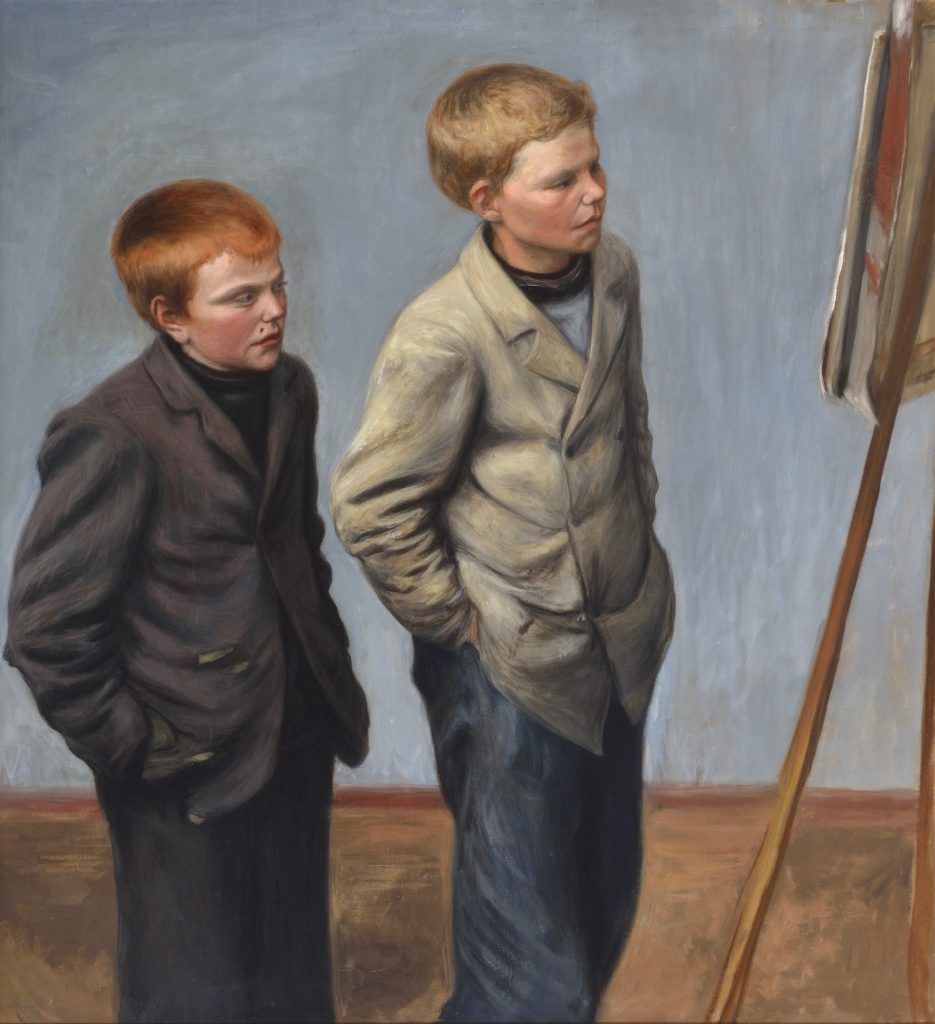Hugo Simberg – Brothers, early 1900s
Artist Hugo Simberg’s (1873–1917) oil painting Brothers was comprised in the Gösta Serlachius Fine Arts Foundations’ collection from an auction in 1999, nearly a hundred years after the artwork was completed. In the painting, two boys are studying an artwork that is resting on an easel.
The subject matter is viewing art. Each boy takes his own stance on what he sees. Simberg did not want to explain his works in words. That is why also the boys have their freedom to interpret the painting on the easel as they wish – to like it or not to like it.
The theme of the painting is art educational. In the end, the viewers create the artwork in their mind while looking at it. This idea fascinated Simberg, who himself participated in the art education movement of the early 20th century. He acted as an art expert and a member of the board of the association Konstverk till skolan / Art for schools. He pondered questions like what art is and how it works.
The viewer can interpret the artwork without knowing the artist, artwork or the background of the persons posing in it. Yet, people interested in art often want to learn more about the painter. Or, where and when ze created the work. Background information opens new perspectives and enhances knowledge of art.
Information about the time of creation of Simberg’s Brothers and its models is controversial. Some of the so-called facts are true and some are not. Was it the Railo brothers, Kalle and Lauri, from Tampere or Sivenius’ boys from Helsinki that were posing for the artist?
Based on the photographs taken at artist’s studio in Helsinki, we know that the painting already existed in 1902. Simberg moved to Tampere in 1904 to commence the work on the frescos of the Johannes church. We know the church at present as Tampere cathedral. A fresco interpretation of Wounded Angel was also completed in the church. Wounded Angel had been painted in oil in 1903 and awarded a State’s prize in 1904.
Reseachers are often reminded not to trust information based on recollection. Simberg married his pupil Anni Bremer in 1910. Almost thirty years after the creation of Brothers and twelve years after the artist had died, Anni Simberg gave information about the painting Brothers. She said that it was painted in Tampere in 1904–1906. Thereafter people have suggested misleadingly that the boys posing in Brothers had been the Railo boys from Tampere.
The elder of the boys in Brothers is however clearly the same boy as in the version of the oil painting Wounded Angel. His name was Werner Sivenius. Therefore, the boys looking at art in the painting located in Mänttä are the Sivenius boys and the first name of one of them was Werner.
Marjo-Riitta Simpanen
Curator, Art Historian


